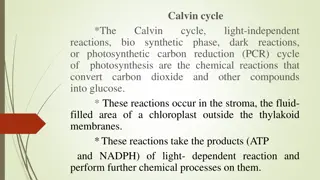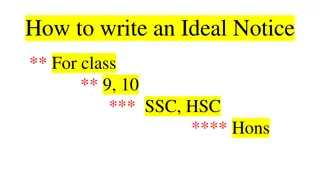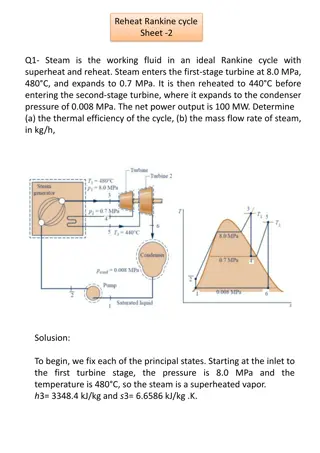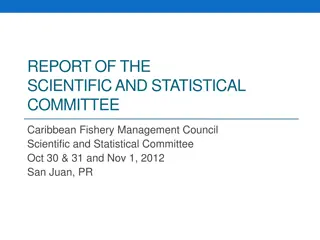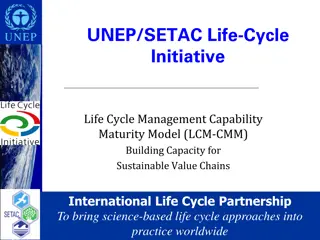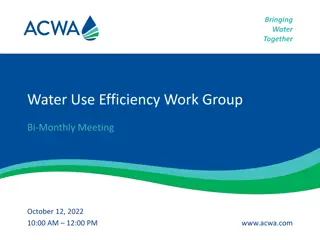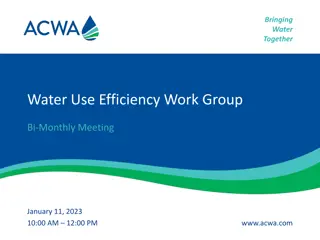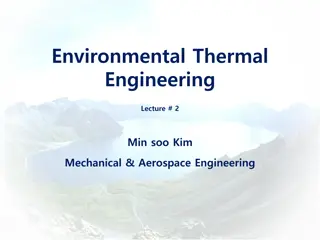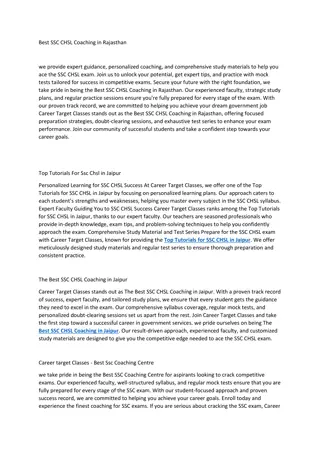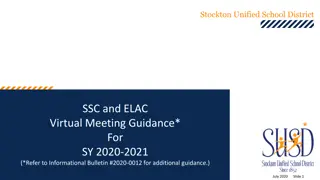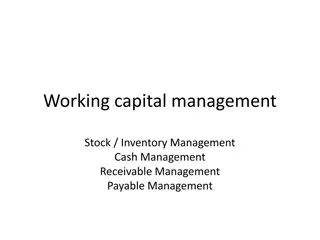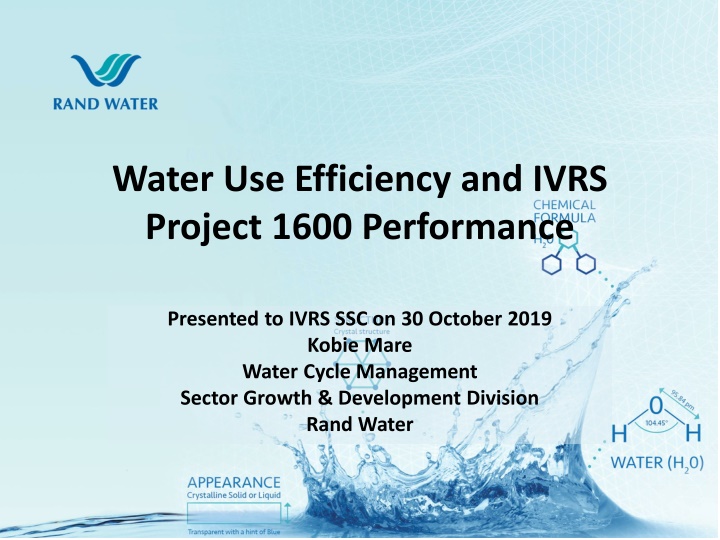
Water Use Efficiency and IVRS Project 1600 Performance Analysis
Explore the water use efficiency of Rand Water and its project 1600, focusing on improving water allocation and management. The analysis includes the Water Use Efficiency Index, performance metrics for different municipalities, and the challenges faced in achieving optimal water usage. Discover how Rand Water aims to enhance efficiency to meet regulatory standards and address water resource sustainability.
Download Presentation

Please find below an Image/Link to download the presentation.
The content on the website is provided AS IS for your information and personal use only. It may not be sold, licensed, or shared on other websites without obtaining consent from the author. If you encounter any issues during the download, it is possible that the publisher has removed the file from their server.
You are allowed to download the files provided on this website for personal or commercial use, subject to the condition that they are used lawfully. All files are the property of their respective owners.
The content on the website is provided AS IS for your information and personal use only. It may not be sold, licensed, or shared on other websites without obtaining consent from the author.
E N D
Presentation Transcript
Water Use Efficiency and IVRS Project 1600 Performance Presented to IVRS SSC on 30 October 2019 Kobie Mare Water Cycle Management Sector Growth & Development Division Rand Water
1. Water Use Efficiency Rand Water is required by DWS to be efficient regarding water use Rand Water needs to allocate its limited water use license to all its users in a fair and equitable manner Rand Water has developed a scientific model to assess the water use efficiency (WUE) of any sub-part in its area of supply Municipalities, especially residential users, have been dealt with for a number of years Project 1600 Now non-residential users such as the mines, industries and businesses need to be brought on board as well Rand Water s Normal demand is 1344 Mm /annum The current WUE Index (WUEI) YTD for Rand Water in total is 1.33, implying that Rand Water and its customers are using 33% more water than is deemed to be normal, which is regarded as a LOW efficiency
% with which the cummulative AAMD exceed or is less than the licence target (Year-to-Date)* Municipality Year- ending June 2018 Year- ending June 2019 Jul-19 22% -43% 20% 17% -8% -6% 38% -25% 20% -25% Aug-19 23% -49% 23% 20% -6% -4% 38% -19% 22% -24% Sep-19 21% -51% 22% 19% -7% -6% 35% -18% 21% -28% 9000 Johannesburg 9001 Ekurhuleni 9002 Tshwane 9003 Emfuleni 9004 Mogale City 9005 Metsimaholo 9006 Rustenburg 9007 Govan Mbeki 9008 Midvaal 9009 Merafong 17% -11% 4% 7% -27% -9% 24% -1% 7% -4% 18% -5% 18% 14% -13% -7% 33% -20% 25% -22% 9011 Rand West -36% -24% -16% -16% -19% 9012 Lesedi -25% -18% -6% -6% -7% 9013 Ngwathe 20% 18% 20% 21% 15% 9015 Victor Khanye 84% 31% 25% 26% 23% 9017 Royal Bafokeng 32% 81% 60% 74% 77% 9018 Madibeng 9019 Thembisile Hani OVERALL 15% 14% 4% 58% -6% 8% 38% 7% 10% 66% 7% 11% 82% 4% 10% Positive value in red font = exceed license target negative value in green font = less than license target zero value in black font = equals to license target DMA - Demarcated metering area
2. Water Use Efficiency as Proxy for Effort or Hardship The low efficiency is partly due to excessive or luxurious usage and partly due to excessive real losses in reticulations and in private plumbing The 1600 Mm /a license target that is available to Rand Water is equivalent to a WUEI of 1.19, which implies that the current demand is 14% above license target [(1.33 1.19) * 100]. Therefore, in order to reduce its demand to equal the license target, it will have to either reduce luxurious usage and/or reduce excessive real losses Achieving a lower WUEI will require specific interventions or cause some form of sacrifice or hardship by all parties involved It can be deduced that water use efficiency can be used as a proxy for effort required or hardship to be endured
3. Expected Future Water Use Efficiency Requirements Assuming no water shortages Taking into account the expected increasing normal demand from Rand Water and its users in the IVRS the expected yield of the IVRS until 2030 It is clear that high water use efficiencies will be required as shown in the graph below (peaking at 1.13 in 2025 and 1.09 in 2050) compared to an actual of 1.2 at the peak of the 2016-17 restrictions Long-Term WUEI (No Restrictions) 1.80 1.70 1.60 1.42 1.42 1.41 1.41 1.41 1.41 1.40 1.40 1.39 1.39 1.39 1.39 1.38 1.50 1.38 1.38 1.38 1.37 1.37 1.37 1.36 1.36 1.36 1.35 1.35 1.35 1.34 1.34 1.33 1.32 1.32 1.31 Efficiency Index 1.30 1.28 1.40 1.27 1.27 1.27 1.25 1.20 1.20 1.26 1.22 1.36 1.36 1.19 1.30 1.34 1.33 1.32 1.30 1.28 1.27 1.27 1.25 1.25 1.25 1.20 1.24 1.23 1.23 1.22 1.22 1.21 1.21 1.20 1.20 1.19 1.19 1.19 1.18 1.17 1.16 1.16 1.16 1.15 1.10 1.14 1.14 1.14 1.14 1.13 1.13 1.12 1.12 1.10 1.09 1.00 0.90 0.80 2010 2015 2020 2025 2030 2035 2040 2045 2050 6 RW Pot Actual WUEI RW Allowable WUEI RW Licence WUEI
WUEI DISTRIBUTION IN RAND WATER 3.5 3.3 3.1 2.9 2.7 2.5 2.3 WUEI 2.1 1.9 1.7 Current RW WUEI = 1.33 1.5 1.3 1.1 0.9 0.7 0.5 RW 5814 RW 5800 RW 5592 RW 1175 RW 4337 RW 2222 RW 5846 RW 0728 RW 2169 RW 3176 RW 0524 RW 1659 RW 4233 RW 5743 RW 2908 RW 3998 RW 0805 RW 5576 RW 1242 RW 0259 RW 2014 RW 4076 RW 2132 RW 0918 RW 0054 RW 1681 RW 1146 RW 1847 RW 3503 RW 2272 RW 2877 RW 0031 RW 2651 RW 0236 RW 0316 RW 1970 RW 2622 RW 4120 RW 0503 RW 0610 RW 5737 RW 2279 RW 1039 RW 0960 RW 2624 RW 0364 RW 0421 RW 1759 RW 0529 RW 0221 RW 1898 RW 2321 RW 3660 RW 1632 RW 0507 RW 0158 RW 1888 RW 0510 High Eff Low Eff > License WUEI 2020 (ACTUAL/NORMAL) Normal Eff No Eff Low Eff < License Extreme Ineff 7
Application of WUE Fair and equitable allocation of limited resource from municipal to end-user levels Restriction of supply during emergencies such as infrastructure failure and heatwaves Evaluation of requests for increased supply (new connections) Determination of cut-off levels for stepped tariff structure Prioritization capital projects Prioritization of WDM interventions Supply control (PRVs) Retrofitting Community awareness and education Leak detection and repair 9
THANK YOU





